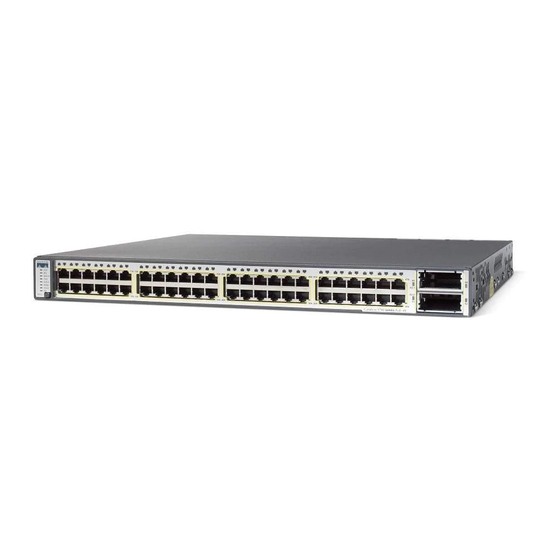5
Planning Switch Stacks
Before connecting the switches in a stack, keep in mind these stacking guidelines:
• Size of the switch and any optional power supply module. The 1150-W power supply module is
longer than the other modules. Stacking switches with the same power supply modules together
makes it easier to cable the switches.
• Length of cable. Depending on the configurations that you have, you might need different sized
cables. If you do not specify the length of the StackWise cable, the 0.5-meter cable is supplied. If
you need the 1-meter cable or the 3-meter cable, you can order it from your Cisco supplier.
• Access to the switch rear panel and to the rear of the rack if you are planning to stack the switches.
If you do not have access to the rear panel, make sure that you cable the switches before you
rack-mount them.
• For switch stacks that are rack-mounted, review this recommended sequence of events:
If you are using the RPS 2300, install the RPS first at the bottom of the stack. If needed, allow
–
one RU space between the RPS and the first switch above to provide room for cabling.
Connect all the 22-pin RPS cables to the RPS 2300 as needed.
–
Rack-mount the switches. If you have the optional 1150-W power supply module, first
–
rack-mount the switch before installing the power supply module.
Connect the RPS cable to the first switch above the RPS 2300. Connect the stack cables to the
–
first switch above the RPS.
Connect the RPS cable to the next switch above the RPS 2300. Connect the stack cables to the
–
next switch above the RPS.
Repeat until all devices are connected.
–
For switch dimensions, StackWise cable part numbers, and additional stacking guidelines, see the
switch hardware installation guide on Cisco.com. For concepts and procedures to manage switch
stacks, see the switch software configuration guide and the stack compatibility guide also on
Cisco.com.
11

